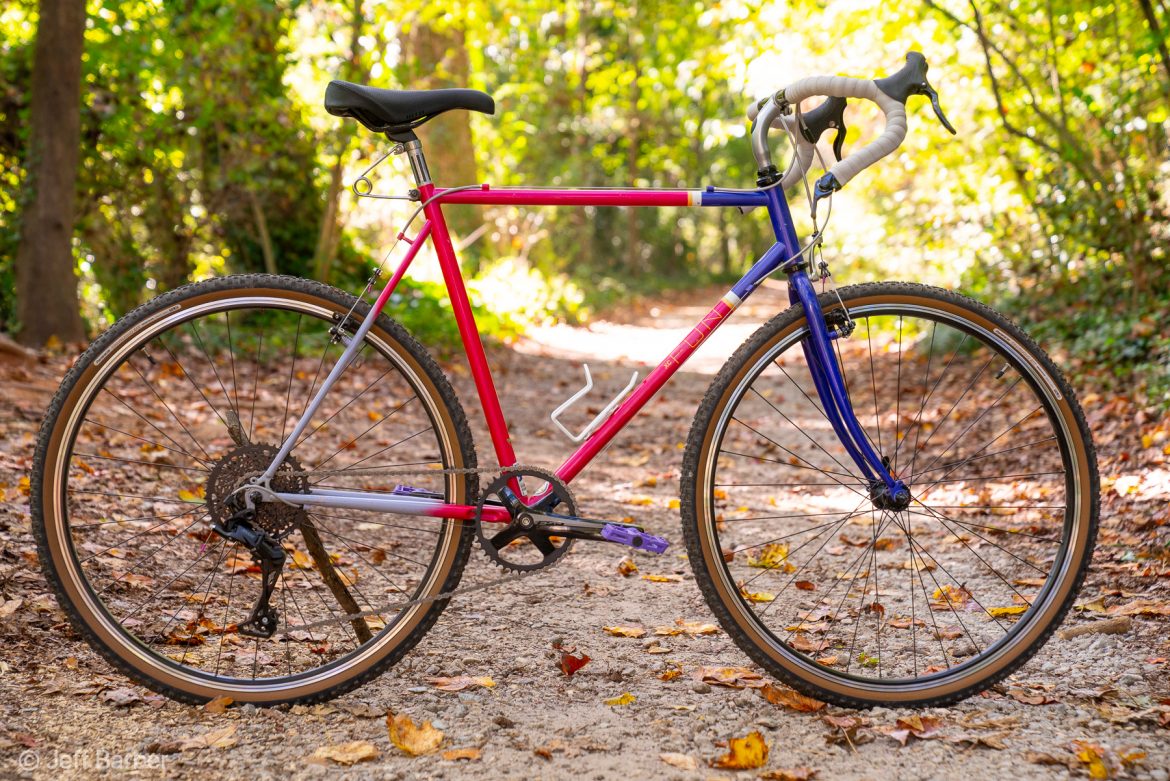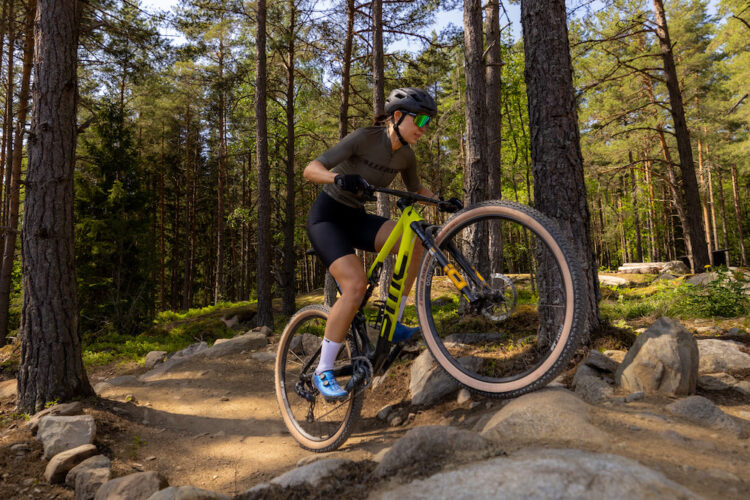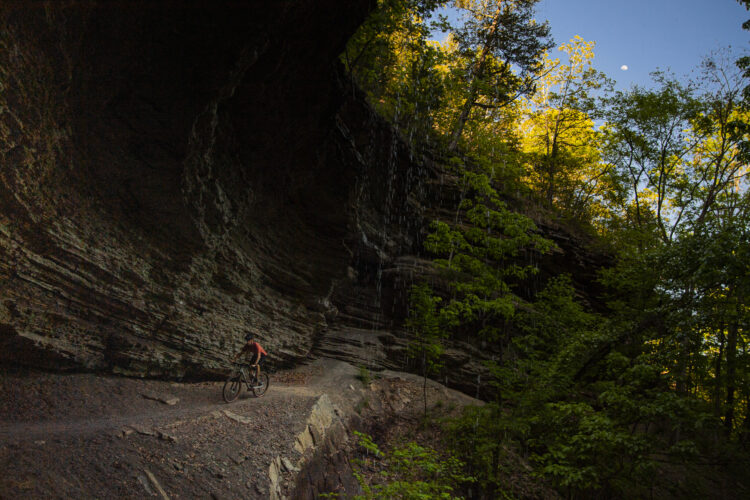
Mountain bike technology moves fast. While this season’s new model will surely be obsolete within a just a few years, classic mountain bikes are forever. That is, if you wait long enough.
Restoring and riding a classic mountain bike holds a lot of appeal. For some, there might be sentimental reasons to restore a bike; for others, it’s about finally buying that bike they never could have afforded in their youth. For others, the process of refurbishing an old bike is all about the process and the journey.
Andrew Kobayashi, lead bicycle mechanic at Bearings Bike Works, understands this perhaps better than most. He’s worked on hundreds of bikes over the years, and has completed countless bike rebuilds and restorations along the way.
“I think that working in a shop, and also just kind of being a general enthusiast, you always have your antenna tuned to these things,” he told me. “You’re always kind of looking out for the opportunity.”

Choosing the right project bike
The key to any vintage mountain bike restoration project is starting with the right bike. As Kobayashi puts it, people tend to “have a hard time making the distinction between old and cool.” Today the hottest bikes among enthusiasts and restorers tend to be those manufactured in the 1980s and 1990s.
It might be tempting to fix up the very first mountain bike you owned that’s been sitting in the garage for a decade or two, but sentimental value isn’t everything. There are three, perhaps more important, factors to consider when choosing the best project bike.


Look toward the high end
Vintage, high-end bikes tend to make better projects than entry-level and mass market bikes from the same time period. A quick internet search should reveal where a bike fit in a brand’s lineup at the time it was produced and whether it was a nice bike in its day, or just average.
“That’s not to say that something that was cheap or entry level is not worth doing,” Kobayashi said. Just like with brand new bikes, entry-level models tend to require more work, either due to wear and tear, or because the frame and parts weren’t great to begin with. And even if you do put in all the work to repair and restore a low-end bike to like-new condition, the end result is still just going to be an entry-level bike.

Hardtail mountain bikes are better to restore than full suspension models
In a way, the vintage mountain bike market is inverted from the market for new bikes, with hardtails sitting at the top. Rear suspension technology has changed so much over the past few decades that restored FS bikes aren’t really practical to ride on the trail today. And as Kobayashi told me, “it is not something that converts over to being like a cool city bike in the same way [as an old hardtail].”
Not only that, finding parts for an obsolete suspension design can be difficult, if not impossible. Plus working on suspension parts is not something most home mechanics, and even local shop mechanics, are comfortable doing.
Hardtail mountain bikes offer a good platform for taking a build in a number of directions, from gravel-bike oriented designs for under-biking on singletrack to cruiser-style, casual bikes for riding around town socially or with the family. Unless you’re restoring a bike just to hang on the wall as art, the key is to work toward a bike that’s going to be fun to ride (and show off). It’s all about melding form and function.
90s bikes are trending… for now
As with fashion and culture, bike nostalgia seems to operate on a 25-30 year timeline. That means restorers today are looking at bikes manufactured in the 1990s and earlier. Kobayashi says he’s especially interested in bikes from 1996-1998. “That seems to be about when a lot of production shifted to aluminum frames. That’s not to say that there weren’t some cool aluminum bikes, but I think aesthetics change, and you know, maybe in 10 years, [aluminum bikes] will be the ones that are desirable.”
Look before you leap
Once you’ve found a bike that seems like a good candidate for rebuilding, it’s important to consider its condition. A frame crack can end a project before it even gets started, though bent tubes are not necessarily a deal breaker, particularly on steel frames. However, steel frames present another potential problem: rust.
Kobayashi likes to pull off the bottom bracket to see what’s going on inside the depths of the frame. A little bit of rust can be cleaned up and dealt with, but bigger holes suggest bigger problems that often aren’t worth fixing.
And while he’s a fan of 80s and 90s vintage bikes, Kobayashi noted there was a lot of experimentation in that era which led to some unusual design choices that could pose challenges for restorers. “You can really easily fall into kind of the trap of weird non-standard, standards,” he said. “I have an old, period Gary Fisher bike that has a weird seat post size that I can’t track down.”

Restore or repurpose?
Once you’ve found a project bike that makes sense and that’s in relatively good shape, you’ll want to decide whether you’re going to restore or repurpose the bike.
“If I have something that has come to me, relatively complete, in decent or at least salvageable shape, or maybe something that has like historical significance or kind of was a cool thing unto itself in its time, then that’s gonna lend itself more toward the restoration project,” said Kobayashi.
For a bike that’s missing some or all of its key parts but still has a quality frame, a reimagined bike build makes sense. Paint colors and decals tend to tie the frame to a particular era which makes for a fun and unique project. “I’m a real sucker for bikes that really scream of the era that they are from,” Kobayashi said.
For that reason, he tends to avoid re-painting frames, whether it’s for a restoration or a more creative project. For one, the cost and labor involved in stripping a bike and having it repainted is a huge undertaking. Sanding off the old paint also removes a lot of a bike’s character and charm. Often a good middle ground involves touching up the paint using a color-matched, high quality paint marker or even nail polish if you can find the right shade.
Finding parts for a vintage bike build can be a challenge too, though for many that’s part of the fun. If you’re going for a period accurate restoration, that limits the parts you can use but the good news is that if you can find them, they generally cost a fraction of what a quality, new mountain bike component costs. For example, 90s-era XTR shifters are much cheaper than current models.
Going with a creative build opens up a lot of possibilities, though compatibility can be a limiter here. For example, a bike that originally specced 26″ mountain bike wheels might be able to fit 700c gravel wheels, but chances are the frame doesn’t have mounts for disc brakes. That requires finding a set of 700c gravel wheels with cantilever-compatible rims. And if you also want those rims to be tubeless compatible, your choices are even more limited.
One good thing is that it’s easier than ever to color match parts like grips, bar tape, pedals, cable housing, and the like for a truly unique look. Fortunately the standards involved here haven’t really changed. Kobayashi mentioned Velo Orange as a good source for reproduction and unique components.

The end result
Compared to classic restored cars, vintage mountain bikes don’t tend to be worth a lot of money, though value is clearly in the eye of the beholder. “There’s not a price that can be put on sentimental value,” Kobayashi said. While fixing up an old bike won’t be a money maker, at least it doesn’t cost nearly as much as restoring a car.
In the end, taking about the value of a restored bike, or whether it’s was a cool bike to start with sorta misses the point. “The aesthetic considerations are certainly there. But it’s a bike. It’s for riding.”
Want to see more cool vintage mountain bike builds? Check out the Bearings Bike Works Instagram feed.






Very cool stuff!
Ha, yeah, the seat post. About 10 years ago I had a Schwinn 974 road bike that I’d found in a ditch with tacoed wheels but a good frame, and brought back to life for use as a commuter. I loved that thing! It had the lightness of aluminum but, being from ’88 or ’89, the slack, cushy geometry of a steel frame. Excellent city bike.
But the seat post, instead of a clamp at the top, had this old school “self-binding” mechanism that used a long bolt to push a wedge between two plates way down inside the seat tube. So when the 25-yr-old old post broke at the top and jammed at the bottom, that was the end of that bike. It was a shame, there was nothing else wrong with it!
I obviously get the appeal of rescuing some old junker, but these days I say just to buy a new frame and put new parts on it. You get all the DIY satisfaction with 1% of the frustration, and a better, more reliable, easier to maintain bike in the end.
Hey now!
My buddy has done a couple Hakkalugi’s in period correct components and refinished them in the factory color that was offered in the model year of each frame. They are lovely!